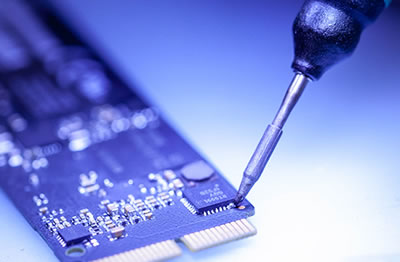The evolution of digital forensics has been a rapid and transformative journey, driven by technological advancements and the increasing complexity of digital environments. In its early days, digital forensics focused on retrieving and analyzing data from static storage media like hard drives and floppy disks. As technology evolved, so did the tools and methodologies used in forensic investigations. Today, digital forensics encompasses a wide array of digital devices and data sources, including smartphones, cloud storage, and IoT devices. One significant development in recent years is the increased use of machine learning and artificial intelligence AI in digital forensics. These technologies have revolutionized the field by automating complex analysis tasks, enhancing the speed and accuracy of investigations. Machine learning algorithms can identify patterns and anomalies in vast amounts of data, which would be impossible for human analysts to process manually. AI-powered tools are also improving the ability to reconstruct deleted or encrypted data, making it easier to uncover crucial evidence.

Another notable trend is the growing emphasis on cloud forensics. As more data is stored in cloud environments, forensic investigators are faced with the challenge of retrieving and analyzing information from distributed and often encrypted sources. Cloud forensics requires new techniques and tools to handle the unique characteristics of cloud data, such as its dynamic nature and the involvement of multiple service providers. This has led to the development of specialized forensic solutions that can navigate the complexities of cloud storage and provide valuable insights for investigations. The rise of IoT devices presents yet another challenge for digital forensics. With the proliferation of smart devices in homes and workplaces, investigators now have to deal with data from a wide range of interconnected gadgets. IoT forensics involves collecting and analyzing data from devices such as smart thermostats, security cameras, and wearable technology. This type of forensic work requires new approaches and tools to handle the diverse and often unstructured data generated by IoT devices.
Looking ahead, Hillsboro Ford Mercury digital forensics is likely to continue evolving in response to emerging technologies and new types of digital evidence. The increasing sophistication of cybercrime, including the use of advanced encryption and obfuscation techniques, will drive the need for more advanced forensic tools and methodologies. Additionally, the integration of blockchain technology and the growing use of virtual and augmented reality could introduce new challenges and opportunities for digital forensic investigations. As digital forensics continues to advance, it will be essential for professionals in the field to stay updated with the latest developments and best practices. Ongoing research and innovation will be crucial in addressing the evolving landscape of digital evidence and ensuring that forensic investigations remain effective in the face of rapidly changing technology. The future of digital forensics promises to be dynamic and exciting, with new opportunities to enhance the pursuit of justice and security in the digital age.